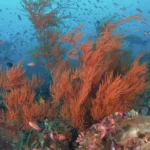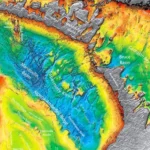Deep-sea ecosystems, concealed beneath the crushing weight of the ocean’s depths, represent one of our planet’s most enigmatic and fascinating frontiers. In this comprehensive exploration, we will delve into their profound significance, unveil the unique life forms and ecological processes that thrive in this extreme environment, and appreciate their vital role in shaping the Earth’s biodiversity and regulating global climate.
The Significance of Deep-Sea Ecosystems
Beyond their remote and enigmatic nature, deep-sea ecosystems hold a profound significance that reaches far beyond their seemingly isolated existence. These ecosystems offer invaluable insights into Earth’s history, evolution, and the interconnectedness of life.
Unique Biodiversity
Deep-sea ecosystems are home to an astonishing array of life forms that have uniquely adapted to the extreme conditions of the abyss. From the bizarre and otherworldly to the surprisingly familiar, these ecosystems showcase life’s remarkable diversity and adaptability, challenging our understanding of what is possible in the harshest environments.
Scientific Discoveries
Exploration of deep-sea ecosystems has yielded groundbreaking scientific discoveries. Researchers have identified new species, revealing the incredible ability of life to adapt and thrive in seemingly inhospitable conditions. Furthermore, the unique adaptations of deep-sea organisms have far-reaching implications, from biotechnological applications to potential insights into life beyond our planet.
Climate Regulation
Deep-sea ecosystems are pivotal in regulating the Earth’s climate, serving as a significant carbon sink. These ecosystems absorb and store vast amounts of carbon dioxide, mitigating the impacts of climate change. Understanding the mechanisms of carbon cycling in the deep sea is essential for addressing global climate challenges and developing effective climate change mitigation strategies.
Extreme Environments and Adaptations
Surviving in the deep sea presents a formidable challenge, with organisms facing intense pressure, frigid temperatures, and perpetual darkness. To thrive in these extreme conditions, life in the deep sea has evolved a stunning array of adaptations.
Bioluminescence
Many deep-sea organisms have developed the ability to produce their light through bioluminescence. This adaptation serves multiple functions, from camouflage and communication to attracting prey and deterring predators. Bioluminescence is a captivating example of nature’s ingenuity and how life has evolved to conquer darkness.
Gigantism and Miniaturization
Deep-sea ecosystems exhibit peculiar patterns of gigantism and miniaturization. Some organisms grow to extraordinary sizes without competition and predation, while others have evolved to be minuscule, conserving energy and resources in this food-scarce environment. These extreme adaptations continue to astound scientists and challenge our understanding of ecological dynamics.
Hydrothermal Vent Ecosystems
Hydrothermal vent ecosystems, found at the ocean’s depths, are among Earth’s most remarkable and otherworldly environments. Here, scalding hot water rich in minerals gushes from the seafloor, providing a unique habitat for various life forms. These ecosystems are teeming with giant tube worms, heat-loving bacteria, and blind shrimp, all of which have evolved to thrive in extreme temperatures and chemical conditions.
Biodiversity Hotspots
Deep-sea ecosystems are far from barren deserts; they are thriving oases of life. These ecosystems encompass a range of environments, each with unique biological communities, ecological niches, and complex food webs.
Cold-Water Coral Reefs
Cold-water coral reefs, found in the Atlantic and Pacific Oceans depths, are rich ecosystems that provide habitat for numerous species. These delicate reefs are critical for sustaining marine biodiversity and play a vital role in carbon and nutrient cycling in the deep sea.
Seamounts and Underwater Mountains
Seamounts, underwater mountains rising from the seafloor, create specialized habitats for marine organisms. These regions are biodiversity hotspots and play essential roles in ocean circulation patterns and the cycling of nutrients, further underscoring their ecological importance.
Abyssal Plains
Abyssal plains and vast ocean floor stretches host deep-sea communities adapted to life in the frigid darkness. These regions are home to unique organisms, including giant squid and bizarre deep-sea fish, which have evolved to thrive where food is scarce and predators are few.
Conservation Challenges and Ethical Considerations
Despite their remote location, deep-sea ecosystems are not immune to human impacts. Our quest to explore and exploit the deep sea’s resources raises various conservation challenges and ethical considerations.
Sustainable Resource Management
Extracting valuable minerals and resources from deep-sea habitats raises concerns about environmental damage. Ethical considerations dictate the need for stringent regulations and sustainable practices to minimize harm to these ecosystems and safeguard their delicate balance.
Protection of Vulnerable Ecosystems
Preserving vulnerable deep-sea ecosystems, such as cold-water coral reefs and hydrothermal vent communities, requires international cooperation and the designation of marine protected areas. These efforts are essential to safeguard these fragile environments from destructive human activities.
Scientific Responsibility
As we uncover the mysteries of the deep, exercising scientific responsibility and ethical conduct is essential. Minimizing disturbances to these ecosystems during research and exploration activities is paramount to preserving their integrity for future generations.
The Future of Deep-Sea Ecosystems
The future of deep-sea ecosystems holds promise and challenges alike. As technological advancements enable further exploration, we must balance our quest for knowledge with responsible stewardship of these delicate environments.
Advancements in Exploration
Advanced technologies, such as remotely operated vehicles (ROVs) and autonomous underwater vehicles (AUVs), will continue revolutionizing our ability to explore and study deep-sea ecosystems. These innovations will provide unprecedented insights into their biodiversity, ecological processes, and the potential for life beyond Earth.
International Cooperation
International collaboration is paramount in ensuring deep-sea ecosystems’ sustainable management and conservation. Establishing comprehensive regulations and guidelines for deep-sea activities is vital for their long-term protection and the responsible utilization of their resources.
Public Awareness and Education
Raising public awareness and educating the global community about the importance of deep-sea ecosystems will garner support for their conservation and responsible management. Public engagement and advocacy ensure these remarkable environments’ long-term health and preservation.
Conclusion
Deep-sea ecosystems are key to understanding Earth’s history, evolution, and climate regulation. These unique environments, teeming with extraordinary life forms and adaptations, demand our respect, scientific responsibility, and international cooperation to ensure their preservation for future generations.
As we peer into the abyss, we are reminded that deep-sea ecosystems are not only a testament to the wonders of our planet but also a critical component of our shared responsibility to protect and conserve Earth’s biodiversity and climate stability. Deep-sea ecosystems are an invitation to explore the unknown, unlock the secrets of life on Earth, and safeguard the irreplaceable treasures of our ocean’s depths.










